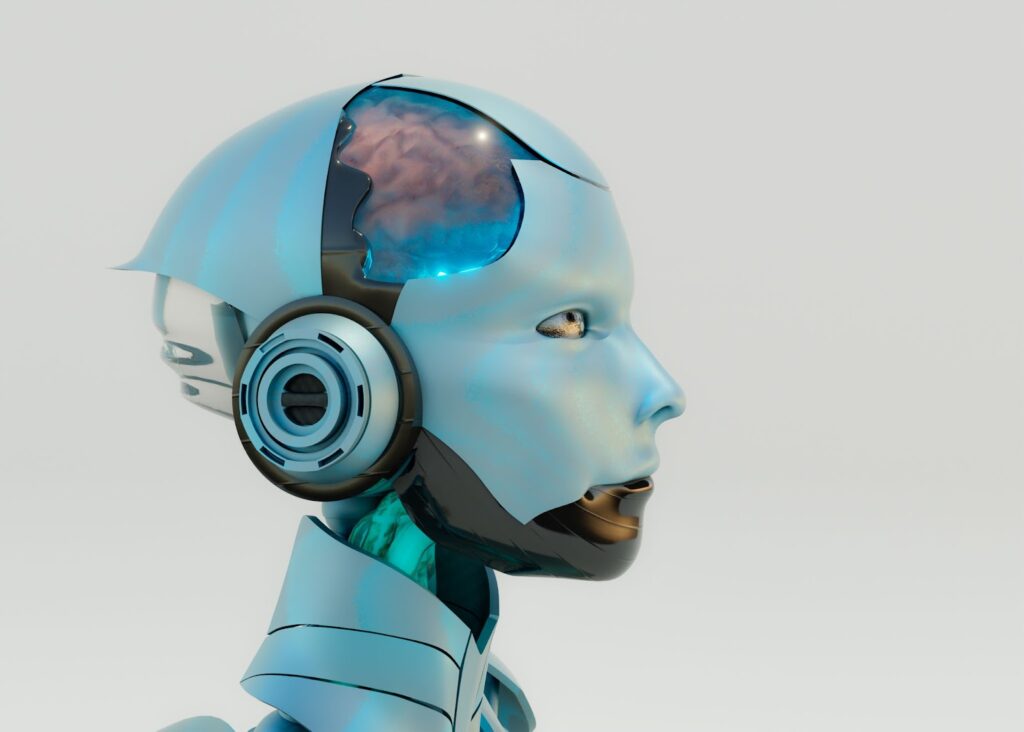The volume of data generated in the world increases every second , creating an opportunity for companies and, at the same time, a challenge: transforming this information into quick and accurate decisions. machine learning and big data technologies come in , which, when combined, have the potential to transform business processes in different sectors.
According to Gartner , by 2025, 80% of large companies will be using machine learning and big data to optimize operations , from customer service to logistics and risk analysis. And the reasons are clear: these technologies increase efficiency, reduce costs and help companies respond quickly to market demands.
But how these technologies are applied to automate business processes is what we will show you throughout this article, exploring their main applications, the benefits and challenges they both bring, as well as understanding the impact they have on the future of corporate operations.
Good reading!
Machine learning and big data : concepts and synergy
To understand how enterprise automation revolutionizes operations and decisions, it is essential to explore the role of two technologies that are shaping this future : machine learning and big data . Alone, both are already powerful, but when combined, they create a solid foundation for more accurate analysis and automation that previously seemed impossible.
What is machine learning and big data ?
In the world of data, machine learning is the technology that allows systems to go beyond fixed rules. Instead of simply executing programmed tasks, these systems can “learn” from data, identifying patterns and adjusting their responses over time . This constant learning is what makes machine learning so valuable for automation.
Big data is the technology that brings together daily , coming from all sides : transactions, social networks, connected devices and much more. This information is varied and arrives quickly, which creates a dynamic and challenging flow. For machine learning , big data is the source of information that the system needs to find complex patterns and improve the accuracy of its actions.
How machine learning and big data complement each other
The true impact of machine learning and big data happens when these technologies meet. Instead of acting in isolation, they complement each other to deliver results that neither of them could achieve alone . Big data provides a massive and diverse database, while machine learning transforms this database into insights . In other words, big data is the fuel, and machine learning is the engine that turns that fuel into motion.
machine learning algorithms have enough material to identify complex patterns and behaviors that would go unnoticed in traditional analysis. It is this combination that allows companies to make decisions quickly and accurately , maintaining a competitive advantage in the market.
Now that we know the power of this synergy, let's explore its practical applications?
Main applications of machine learning with big data in business automation
The union of machine learning and big data makes it possible to automate complex processes . Next, we will see how this combination is applied in different areas and how it transforms company operations.
Customer service and automated support
Companies that deal with thousands of daily interactions find machine learning and big data a solution to automate and personalize their service . Analysis of data generated by previous interactions allows machine learning to identify patterns of behavior, optimizing responses to meet the specific needs of each customer.
- Practical example: Imagine that a technology company analyzes, with big data , all the common questions asked by customers about its products and uses this data to train a chatbot based on machine learning . This chatbot not only answers frequently asked questions automatically, but also adapts to new questions, improving the accuracy of answers based on data collected over time.
Supply chain and logistics
In logistics operations, machine learning and big data work together to predict demands and optimize routes , enabling cost reduction and improved efficiency. With the volume of data obtained from sales, weather, seasonality and other variables, machine learning can identify patterns and adjust stock flow in real time .
- Practical example: In a supermarket chain, big data analyzes sales history, weather changes and local events to predict demand for specific products. With this data, machine learning can adjust the stock of each unit and recommend the most efficient routes for replenishment, automating logistics and ensuring that the right products arrive at the right place at the ideal time.
Financial and risk analysis
In the financial area, the combined use of machine learning and big data allows automated systems to detect suspicious behavior and carry out risk analysis in real time . Big data provides a detailed history of transactions and financial patterns, while machine learning analyzes this information to identify anomalies and possible fraud in an automated way.
- Practical example: In a digital bank, big data collects and processes data from millions of daily transactions , while machine learning analyzes this data to detect unusual patterns , such as transactions outside a customer's profile. If suspicious behavior is identified, the system automatically triggers an action , such as temporarily suspending the account for verification.
Marketing and personalization
In marketing , the combination of machine learning with big data allows for large-scale personalization . By analyzing customer behavior data, purchase history and personal preferences, machine learning can generate automatic product recommendations and targeted campaigns, all based on big data .
- automated and personalized marketing campaigns An e-commerce analyzes each customer's browsing and purchasing history using big data . With this data, machine learning identifies patterns and suggests specific products , automatically sending personalized offers to each customer. This process increases the chances of conversion , as the customer receives recommendations that reflect their preferences, without the need for manual intervention.
These examples show how the synergy between machine learning and big data is applied in a practical way, automating processes that would previously require human intervention . Next, we will understand how this automation impacts operational efficiency and cost reduction in companies.
Advantages of automation with machine learning and big data
Automating processes by combining machine learning and big data brings a series of advantages to companies, especially when it comes to efficiency and accuracy. Below, we explore how this combination of technologies contributes to operational gains and the competitiveness of companies in the market.
Operational efficiency and cost reduction
By enabling systems to “learn” from large volumes of data and make decisions based on identified patterns, automation with machine learning and big data eliminates manual, repetitive steps that would otherwise consume time and resources.
- Practical example: imagine a telecommunications company that uses big data to analyze service history and machine learning to identify the most frequent types of requests and anticipate technical problems. With this automated system, repetitive services are carried out by chatbots , while human support focuses on more complex cases. This results in a significant reduction in costs and an improvement in service agility , optimizing the use of company resources.
Scalability and accuracy
The combination of machine learning and big data offers a scalable basis for companies to monitor the growth of operations, increasing decision accuracy . machine learning -based systems can handle the additional complexity and automatically adjust models , maintaining operational efficiency at scale.
- Practical example: in a logistics company that deals with different routes and distribution machine learning system is constantly fed by big about routes, weather conditions and peak times. As a result, the system automatically adjusts delivery plans , improving forecast accuracy and reducing delays, regardless of the increase in the number of orders. This level of accuracy and scalability would be impossible without the integration between these two technologies.
These benefits help companies across all sectors operate in a leaner, more agile manner , promoting a significant competitive advantage . However, despite all the gains, there are challenges and limitations that need to be considered before implementation. Next, we will address the main difficulties companies face when adopting automation with machine learning and big data .
Challenges and limitations in implementation
Implementing machine learning and big data for business automation is a process that involves complexities and barriers . Below, we explore the main challenges facing companies and how Skyone can help overcome these obstacles.
Data quality and security
Machine learning technology only works well with quality data. However, ensuring that all data is complete, accurate and secure is a challenging task , especially with the volume and diversity of data that big data involves. Furthermore, there is concern about data security and privacy, which needs to comply with regulations such as the LGPD (General Data Protection Law) in Brazil.
- Practical example: a company that uses machine learning for credit analysis needs accurate and secure financial data from customers. Outdated or incomplete data can compromise system reliability . Furthermore, any security breach can customer trust
Costs and technical complexity
Implementing a structure that supports machine learning and big data involves financial and technical investments . The need for advanced tools and professionals specialized in data science and machine learning is one of the factors that make this adoption complex and, often, costly.
- Practical example: a retail chain that wants to automate its sales forecasts will need a robust infrastructure to collect and process data on a large scale. In addition to equipment and software , the company needs to rely on experts to manage the system machine learning models are always up to date and operating correctly.
How does Skyone help companies overcome these challenges?
At Skyone , we offer solutions that help companies address the key challenges of implementing machine learning and big data . Our secure and scalable cloud infrastructure makes it easy to store and process large volumes of data, ensuring a solid foundation for the automation operations our customers want to build.
We work with a data security-first approach, helping companies implement protection and compliance measures to ensure that sensitive information is properly protected. Furthermore, our specialized team is available to assist in the configuration and maintenance of machine learning , reducing the need for high investments in internal teams .
Our partnership enables companies to overcome barriers of cost and technical complexity, making automation with machine learning and big data more accessible and secure for our customers.
Want to know more? Get in touch with one of our experts and find out how we can help your company with this automation process.
The future of enterprise automation: trends and preparation for innovation
Business automation with machine learning and big data is undergoing transformation, and the innovations ahead promise to further change the way companies operate and make decisions . Staying on top of trends is crucial for companies that have already adopted these technologies or are starting to maximize the value of automation. Below, we explore the main directions and impact that automation can bring to the future of business operations:
#1 – Continuous learning from real-time data: with the advancement of real-time data collection and analysis, machine learning can continually learn and adapt. This means that companies will no longer need to wait for periodic reports to make adjustments : automatic decisions can be adjusted at the exact moment new information emerges. This allows companies to react instantly to changes in customer behavior, market trends or operating conditions.
#2 – Expanding the use of generative AI: generative artificial intelligence (such as models that produce content or suggestions based on previous data) has great potential for automation . Tools based on generative AI can write reports, answer common customer questions, and even create personalized content for marketing . By automating creation and fulfillment tasks, companies can deliver a personalized experience at scale , reducing the time and cost of producing content.
#3 – Automated security and compliance: The increase in sensitive data requires companies to improve their security and comply with regulations. machine learning tools can monitor large volumes of data for threats and ensure procedures are aligned with regulations. This reduces the risk of security breaches, ensuring that customer trust is preserved and avoiding legal problems.
#4 – Integration with IoT: the Internet of Things (IoT) generates a huge amount of data in sectors such as logistics, healthcare and manufacturing. By integrating this data with machine learning and big data , companies can monitor operations remotely and make automatic adjustments to maximize efficiency. This integration allows you to monitor equipment and processes in real time, preventing failures and optimizing performance.
#5 – Expansive automation for analytical and creative tasks: Machine learning can analyze large volumes of data to find insights personalized marketing campaigns . marketing teams to make informed decisions and create strategies based on robust data.
These trends represent a significant shift in enterprise automation. Companies that adapt to these innovations will be better prepared to make quick and accurate decisions, respond to market changes and, above all, strengthen the efficiency and competitiveness of their operations .
Conclusion
Machine learning and big data are changing the daily lives of companies. Both are no longer distant technologies, but current tools that allow you to make faster decisions and automate processes that were previously complex and time-consuming . Throughout this article, we have seen how these solutions can transform different areas, such as Customer Service, Logistics, Financial Security and Marketing , bringing the efficiency and precision that only large volumes of data and advanced algorithms can offer.
In addition to the immediate benefits, automation with machine learning and big data opens the way to new possibilities. Companies that make good use of this synergy can scale their operations and react in real time to market changes , without losing quality. This advancement makes the operation more agile and intelligent , but requires attention to crucial points , such as ensuring the security and quality of data, in addition to having a robust technical infrastructure to support these technologies.
Looking ahead, trends in continuous learning, generative AI, and IoT integration show that we are just at the beginning of an era of smarter automation . And there is no doubt: companies that are prepared to adopt these innovations now will be better positioned in the future.
Did you like this content and want to know more about how to structure a foundation to enhance automation with machine learning and big data ? Read our article on AI and data architecture and discover how to build a robust data structure to expand your automation strategies.




